Covid-19: The mask-wearing US city that bucked the trend
- Published
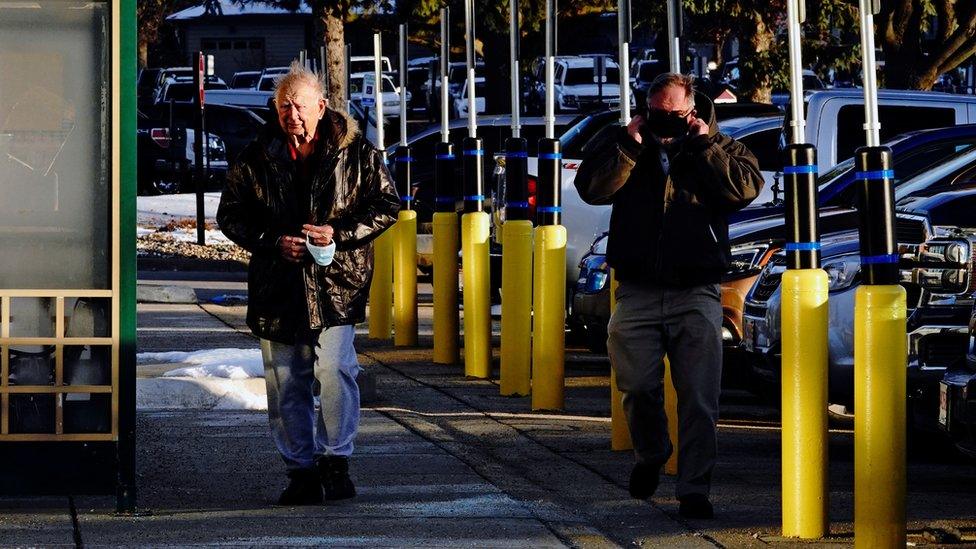
The South Dakota governor is against mask mandates but some cities have introduced their own
President-elect Joe Biden has said one of his first actions in office will be to call on all Americans to wear a mask, or face-covering.
More than half of US states currently have a mask mandate in place to limit the spread of coronavirus, but the issue has become highly controversial.
We've taken a closer look at one mask-wearing US city, which has diverged from the state-wide policy.
Care needs to be taken in drawing conclusions about wearing face coverings, but we can look at and compare the available data and consider the range of factors that may be involved in differing infection rates.
A case study in South Dakota
South Dakota has one of the highest coronavirus infection rates in the country.
Its Republican Governor Kristi Noem has not introduced compulsory mask-wearing, and has been unwilling to bring in state-wide lockdown restrictions, arguing the government has no right to do so.
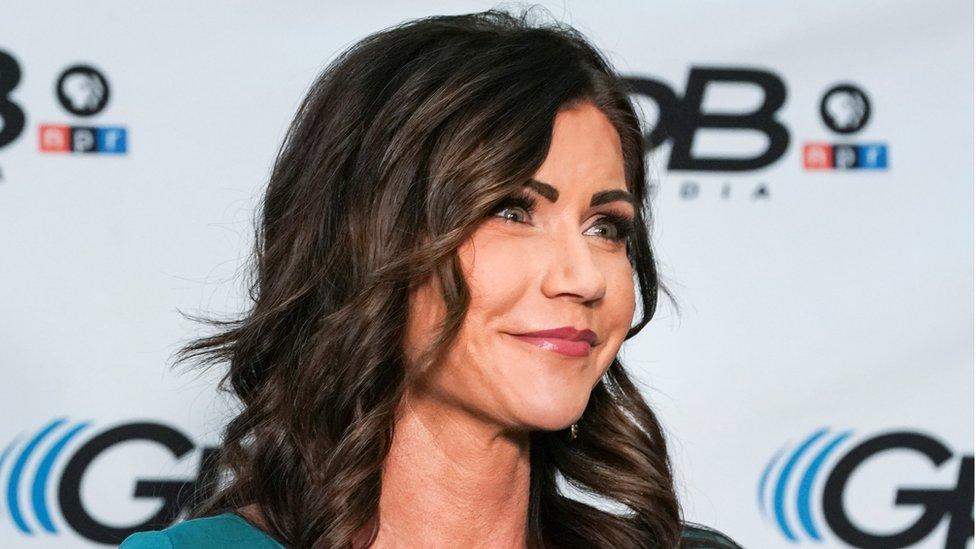
Kristi Noem has been the governor of South Dakota since 2019
However, some communities in South Dakota have chosen a different path. The city of Brookings - fourth largest in the state - was the first to impose rules on masks inside businesses in September, along with other measures.
So has there been a fall in the city's infection rate since the introduction of these restrictions, which have not only included face coverings, but others such as limits on the capacity in businesses?
The decision to impose mask-wearing in Brookings was initially met with some resistance says William McMacken, publisher of the local Register newspaper.
But alongside consistent messaging from local government and health officials, mask-wearing became widespread.

Brookings started asking residents to wear face coverings inside businesses in September
"When I frequent my favourite grocery store in Brookings I would estimate the number of customers wearing masks in there is around 80% to 90% right now," he said.
A major factor in the decision was keeping the university - South Dakota State - open for teaching and therefore retaining the large student population during the autumn, adds Mr McMacken.
The requirements for mask use were brought in by the city of Brookings but they don't apply across the entire county of the same name.
Our data is for the county, not the city, so it has its limitations.
Brookings County now has the lowest infection rate out of the five most populous South Dakota counties.
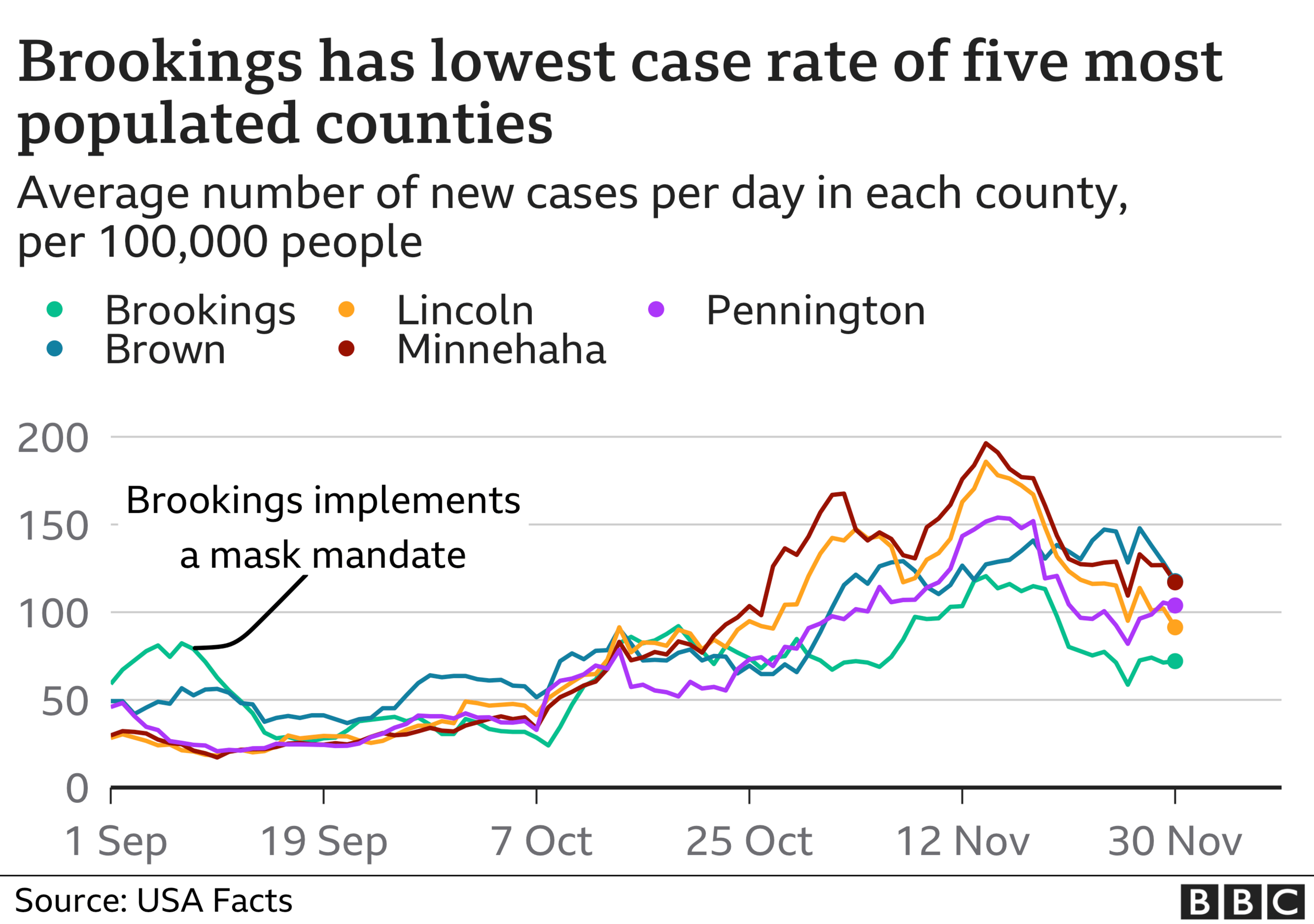
In September when the city of Brookings introduced tighter Covid restrictions, including mask-wearing measures, it had the highest.
Also, as infections rose across the state in October and November, the upturn in Brookings was lower than elsewhere.
We can't say that this was down to masks usage alone, but Bonny Specker, an epidemiologist at South Dakota State University, says along with measures such as limits on bars and restaurants, rules on face coverings have made a difference.
"South Dakota does not have a mask mandate and has one of the highest rates per capita of current hospitalisations and deaths in the country. When you compare Brookings County to other counties that have the 10 most populous cities, the data is consistent with the mask mandate being helpful."

Governor Noem encouraged people to attend a big biker rally in Sturgis, South Dakota, in August
Dozens of medical associations have been campaigning to "Mask Up South Dakota" as the state faced a spike in infections, and doctors have written to the governor to intervene.
Recently, more cities in South Dakota have gone their own way and introduced tighter measures. On 17 November the largest, Sioux Falls in Minnehaha County, passed a 60-day mask mandate, external.
How does South Dakota compare with other US states?
Governor Noem has pointed to other US states which have had mask mandates in place for some time but are still seeing cases rise.
Her spokesman, Ian Fury, has said: "Look at Minnesota, Wisconsin, and Illinois - states that have had mask mandates for months but are still seeing rapidly increasing cases."
It's true that these states have experienced an increase, but none has seen as many cases per capita throughout the pandemic as South Dakota, nor such a dramatic peak in November.

After introducing mask mandates along with other Covid restrictions, Minnesota, Illinois and Wisconsin kept cases relatively low, but they have seen a spike as infections have risen across the US since the summer.
All three states have implemented tighter restrictions throughout the pandemic than South Dakota alongside mask mandates, and their recent surges have been later and less severe.
Since the start of the outbreak, South Dakota has had more than 9,700 total cases per 100,000 people, compared with around 7,600 in Wisconsin, and 6,300 in Illinois and Minnesota.
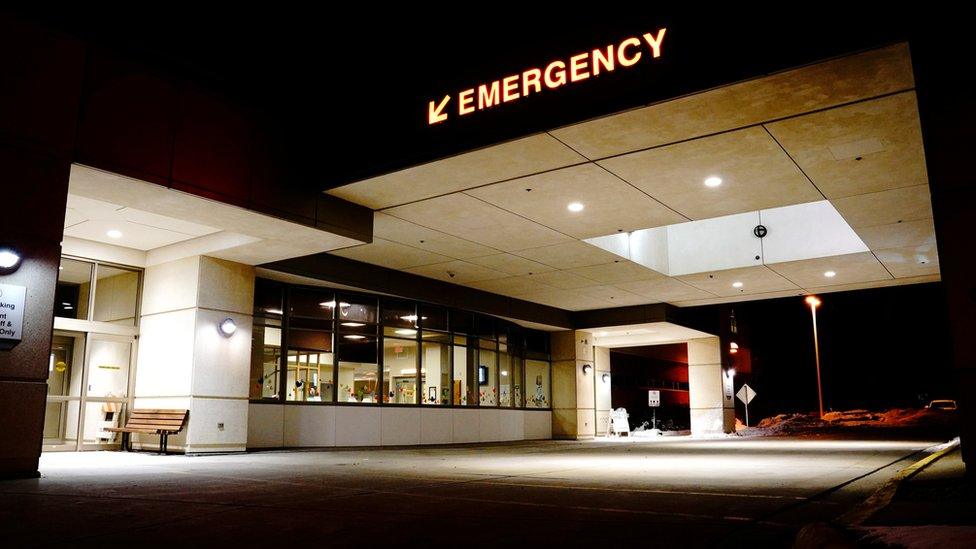
Doctors in South Dakota have been urging residents to "mask up"
Studies out of the US suggest requiring masks in public can help to reduce infection rates.
A study by the US Centers for Disease Control (CDC), external released in late November looked at infection rates in Kansas from June to August.
In the summer, the state's governor introduced compulsory mask-wearing in public spaces but allowed local counties to opt out, and most chose to.
The study found that cases decreased in parts of Kansas which had brought in rules on wearing a mask, but cases continued to rise in those that chose not to.
It said these findings were "consistent with declines in Covid-19 cases observed in 15 states and the District of Columbia, which mandated masks, compared with states that did not have mask mandates."
Assistant professor Kate Grabowski, who reviews research papers at Johns Hopkins University, says: "All of the studies we have reviewed show that mask mandates are effective."
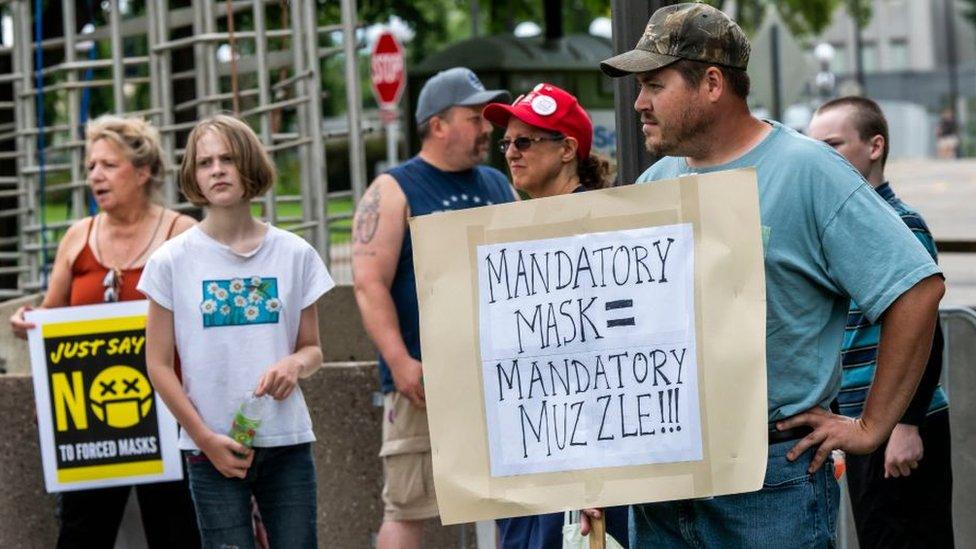
There have been anti-mask protests across the US, including the above in Minnesota
Experts make clear there may be a range of factors driving down infection rates, and Prof Grabowski adds that "the magnitude of effectiveness varies across studies which is not surprising given that the impact depends on human compliance which is likely variable across locations".
The CDC were initially hesitant about recommending mask usage, but in April advised that masks or face coverings should be worn when people are unable to physically distance. The World Health Organization (WHO) did the same in June.
The WHO says they can help, external us protect each other and reduce the spread from people who are contagious but have no symptoms.
Brookings hasn't eradicated Covid-19, but council member Nick Wendell says the measures relieved some of the burden on the healthcare system and has allowed schools and businesses to remain open.
"We've listened to the science, ignored the politics, and learned lessons from regions of the country that were hit harder and earlier."

